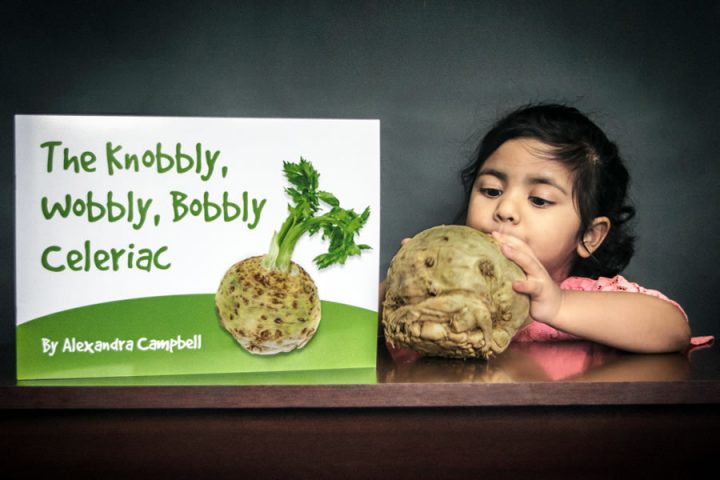
Children and Vegetables
Familiarity is the “master key” to increasing intake
I cannot begin to count the number of times over the past 20 years of being a public health nutritionist that I’ve been asked that burning question … how can I get my children to eat more vegetables? And since becoming a Mum thirteen years ago, I have to admit it’s a question I’ve asked of myself from time to time. And what I’ve learnt over the years is that there are numerous ways, techniques, tricks if you will, but the most important piece of advice I can give? NEVER GIVE UP! Keep the vegetables showing up on their plates, even when they refuse them time and time again. Model good food behaviours yourself, making sure you’re striving for your all important 5-a-day, and use positive reinforcement whenever and however you can!
And now we have strong research evidence to back this personal opinion up. Purely Nutrition have been working with a fantastic team of researchers from the School of Psychology at the University of Leeds*, co-mentoring PhD student, Chandani Nekitsing (that’s Dr Nekitsing now!) who has dedicated the past five years to her fabulous doctoral thesis entitled “Strategies to Increase Vegetable Intake in the Early Years”. Chandani investigated a number of different strategies used in research, in child-care settings and by parents to increase vegetable intakes in young children aged between 2 and 5 years of age. Chandani employed a mixed-methods approach, conducting: a detailed systematic review of existing literature on the subject; meta-analysis of existing research evidence; two cluster randomised controlled trials, and; a qualitative research study. A pretty robust approach!
I’ll cut to the chase (but all references are included below for any curious minds who want to read more!) and tell you that Chandani concluded that familiarisation and learned safety are essential components for increasing vegetable intake in pre-school children. Chandani’s work found strong support for the effectiveness of repeated taste exposures on increasing intakes of vegetables in these young children. Simply put, this means that you offer the same foods frequently over a sustained period of time. Chandani found that 10 taste exposures to a new (novel) vegetable (mooli) increased intakes, and that these increased intakes were maintained at 6-months post-intervention. And the great news? This effect was observed even in “food fussy” children! Whilst different research studies give differing numbers of exposures needed to increase sustainable intakes, they generally range from around 8 -12 exposures, offered at least once per week. The reality is this is likely to differ between children; some will take more exposures than others. But the take home message here? DO NOT GIVE UP!
So it’s simple right?… just expose your children to the taste of vegetables and over time they will learn to accept them? But what if your little darling won’t even touch a vegetable, let alone get it close enough to their mouth to consider actually tasting it? Well Chandani, considered these guys too. Our non-tasters. We worked together on a concept to improve the familiarity of new (novel) vegetables, so that non-tasters could get to know these vegetables in a non-threatening, non-tasting way, to see if it would positively impact on their willingness to try the novel vegetable … and it did! Chandani’s cluster randomised trial basically found that learning about the target vegetable (in this case celeriac) through a fun and engaging, age-appropriate story book (The Knobbly Wobbly Bobbly Celeriac) increased children’s willingness to try the new vegetable. Not only that, she also found that by combining sensory play with the vegetable, alongside the storybook, increased willingness to try even further.
And so, five years on, with all this fabulous work completed we are pleased to bring you all … The Knobbly Wobbly Bobbly Celeriac! As a company the team at Purely Nutrition strive to bring fun, evidence-based, healthy lifestyle educational products to schools, early years settings, childminders and parents – and our range of storybooks, developed in-house by Purely Nutrition nutritionists and teachers are a great example of our dedication to this process. Written as part of the research process outlined above our range of fun and engaging story books use rhyme and repetition to encourage children to eat more healthily.
Each book in the series also includes an introduction to sensory learning activities in order to increase the impact of the storybook on children’s willingness to taste and try each novel fruit/vegetable. There is also a craft idea and two recipes relating to each books target fruit/vegetable to further support and reinforce the impact of the book. And to show how easy and fun the books are to use, we’ve produced a little demo video below:
Other books in the series … The Knobbly Wobbly Bobbly Celeriac | Bish Bash Bosh We Love Squash! | The Pineapple Parade
These books are available to buy online at www.purelynutrition.com, priced at £9.99.
* The partnership between Purely Nutrition Ltd and academic colleagues, Prof Marion Hetherington, Dr Pam Birtill and Chandani Nekitsing, School of Psychology, University of Leeds, was funded by an ESRC Collaborative Award through the White Rose Social Science DTC.
References:
Chandani Nekitsing, Pam Blundell-Birtill, Jennie E. Cockroft, Marion M. Hetherington (2018) Systematic review and meta-analysis of strategies to increase vegetable consumption in preschool children aged 2–5 years. Appetite 127 : 138-154.
Nekitsing, C., Blundell-Birtill, P., Cockroft, J. E. & Hetherington, M. M. (2019) Taste exposure increases intake and nutrition education increases willingness to try an unfamiliar vegetable in preschool children: a cluster randomized trial. Journal of the Academy of Nutrition and Dietetics, doi.org/10.1016/j.jand.2019.05.012.
Nekitsing, C., Blundell-Birtill, P., Cockroft, J. E., Fildes, A. & Hetherington, M. M. (2019) Increasing Intake of an Unfamiliar Vegetable in Preschool Children Through Learning Using Storybooks and Sensory Play: A Cluster Randomized Trial. Journal of the Academy of Nutrition and Dietetics, doi.org/10.1016/j.jand.2019.05.017.
